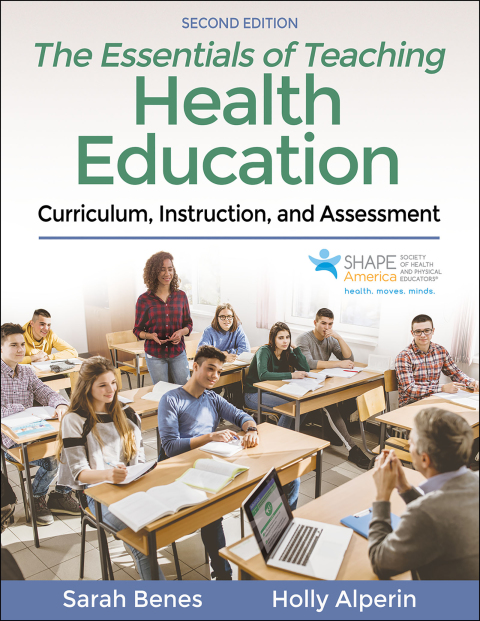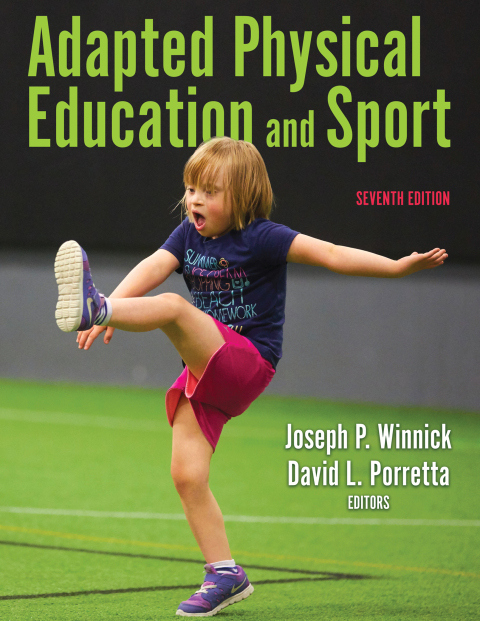Description
Efnisyfirlit
- Title Page
- Copyright
- Dedication
- Contents
- Preface
- Acknowledgments
- Introduction
- Part I. Building the Foundation of a Skills-Based Approach
- 1. The Role of Health Education
- Health as a Continuum
- The Need for Health Education
- Using Resources in School-Based Health Education
- Designing Health Education
- Improving Health Outcomes
- Summary
- 2. Understanding a Skills-Based Approach
- Components of Skills-Based Health Education
- Skills-Based Health Education in Practice
- Support for Skills-Based Health Education
- Summary
- 3. Equity and Justice in Health Education
- Health Disparity and Health Inequity
- Factors Contributing to Inequities
- Social Justice and Health Equity
- Social Justice Practices for Your Classroom
- Summary
- 4. Developing Health-Literate Individuals
- Components of Health Literacy
- Continuum of Health Literacy
- Developing Health Literacy as an Asset
- Establishing Health Literacy for Life
- Summary
- 5. Examining Student Motivation
- Theories of Motivation
- Developmental Levels and Motivation
- General Considerations Across Age Levels
- Summary
- 6. Making Cross-Curricular Connections
- A Coordinated Approach to Student Success
- Shaping Local Wellness Policies
- Making Interdisciplinary Connections for School Improvement
- Summary
- Part II. Teaching to the National Health Education Standards
- 7. Accessing Valid and Reliable Information, Products, and Services
- Step 1: Introduce the Skill
- Step 2: Present Skill Cues/Critical Elements
- Step 3: Model the Skill
- Step 4: Practice and Feedback
- Step 5: Assess the Skill and Support Transfer
- Summary
- 8. Analyzing Influences
- Step 1: Introduce the Skill
- Step 2: Present Skill Cues/Critical Elements
- Step 3: Model the Skill
- Step 4: Practice and Feedback
- Step 5: Assess the Skill and Support Transfer
- Summary
- 9. Interpersonal Communication
- Step 1: Introduce the Skill
- Step 2: Present Skill Cues/Critical Elements
- Step 3: Model the Skill
- Step 4: Practice and Feedback
- Step 5: Assess the Skill and Support Transfer
- Summary
- 10. Decision Making
- Step 1: Introduce the Skill
- Step 2: Present Skill Cues/Critical Elements
- Step 3: Model the Skill
- Step 4: Practice and Feedback
- Step 5: Assess the Skill and Support Transfer
- Summary
- 11. Goal Setting
- Step 1: Introduce the Skill
- Step 2: Present Skill Cues/Critical Elements
- Step 3: Model the Skill
- Step 4: Practice and Feedback
- Step 5: Assess the Skill and Support Transfer
- Summary
- 12. Self-Management
- Step 1: Introduce the Skill
- Step 2: Present Skill Cues/Critical Elements
- Step 3: Model the Skill
- Step 4: Practice and Feedback
- Step 5: Assess the Skill and Support Transfer
- Summary
- 13. Advocacy
- Step 1: Introduce the Skill
- Step 2: Present Skill Cues/Critical Elements
- Step 3: Model the Skill
- Step 4: Practice and Feedback
- Step 5: Assess the Skill and Support Transfer
- Summary
- Part III. Putting Everything Into Practice
- 14. Using Data to Inform Curriculum Planning
- Compiling Functional Information
- Gathering and Understanding Data
- Interpreting Data to Make Decisions on Curriculum
- Using Data to Build Support for Health Education
- Summary
- 15. Eight Steps for Curriculum Development
- Step 1: Get to Know the Students and the Community
- Step 2: Formulate Goals
- Step 3: Design Benchmark Assessments
- Step 4: Determine the Health Topics, Functional Information, and Skills
- Step 5: Create a Scope and Sequence
- Step 6: Develop Unit Plan, Objectives, and Outcomes
- Step 7: Develop Unit Assessments
- Step 8: Create Lesson Plans
- Summary
- 16. Designing Meaningful Assessments
- Purpose of Assessment
- Types of Assessment
- Authentic Assessment
- Rubrics and Grading
- Constructive Feedback
- Summary
- Part IV. Strategies for Effective Instruction
- 17. Creating a Positive Learning Environment
- Know Yourself
- Have a Plan
- Build Relationships With Your Students
- Establish Classroom Norms, Consequences, and Reward Systems
- Foster Student Leadership and Involvement
- Be a Positive Role Model
- Summary
- 18. Implementing a Skills-Based Approach
- Facilitate Learning Experiences
- Format Lessons to Support Skill Development and Knowledge Acquisition
- Provide Meaningful, Relevant Learning Experiences
- Foster Participation and Active Learning
- Provide Opportunities for Self-Reflection, Internalization, and Personalization
- Provide Opportunities for Skill Development
- Summary
- 19. Meeting the Unique Needs of Teaching Elementary Health Education
- Making Time for Health Education
- Considerations for the Elementary Level
- Using Children’s Literature to Support Health Education
- Engaging Families and the Community
- Summary
- 20. Professional Development and Advocacy
- Staying Current and Relevant
- Engaging in Professional Development Opportunities
- Developing a Personalized Professional Development Plan
- Using What You Learn
- Advocating for Health Education
- Summary
- Glossary
- References
- Index
- About the Authors
- About SHAPE America







Reviews
There are no reviews yet.